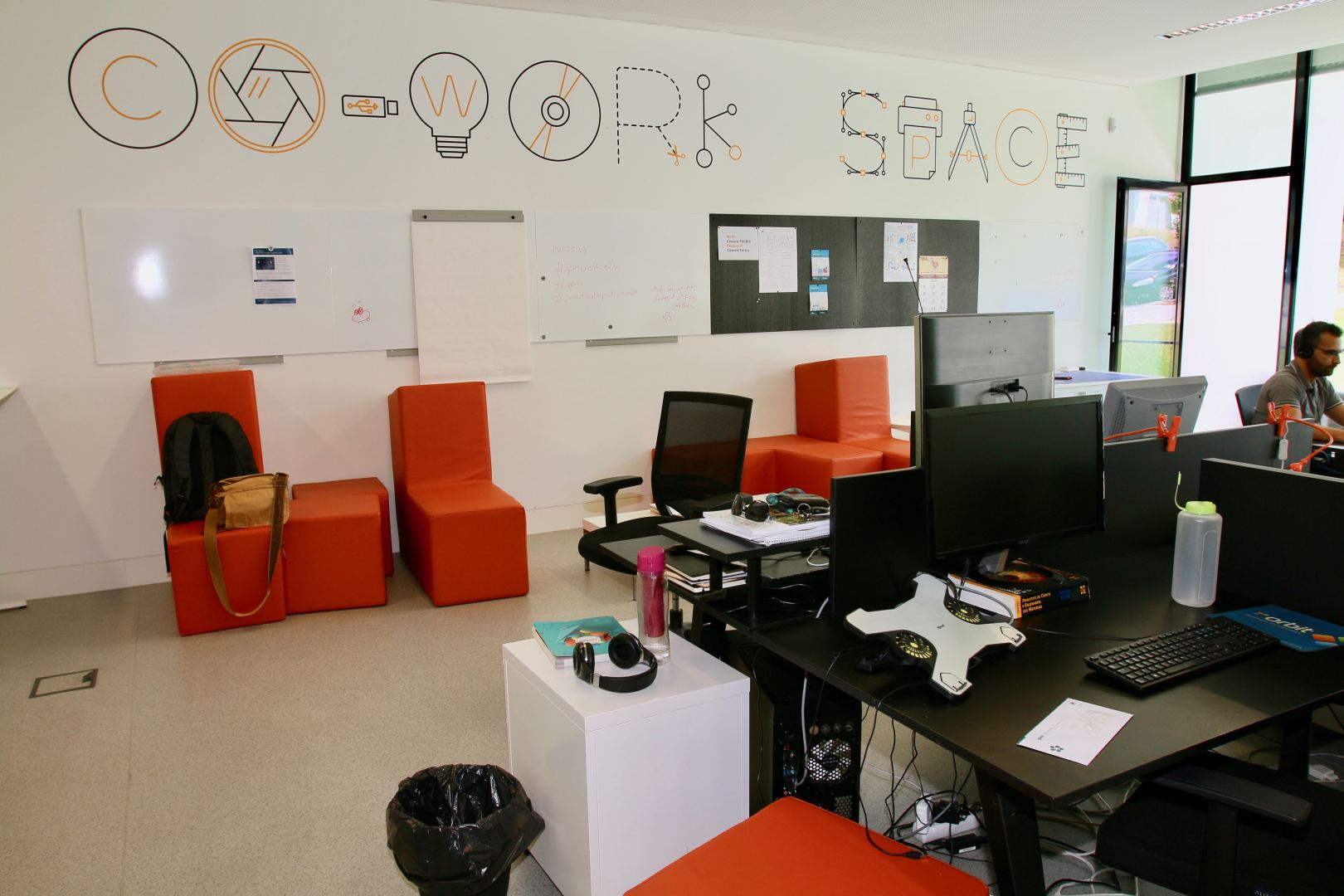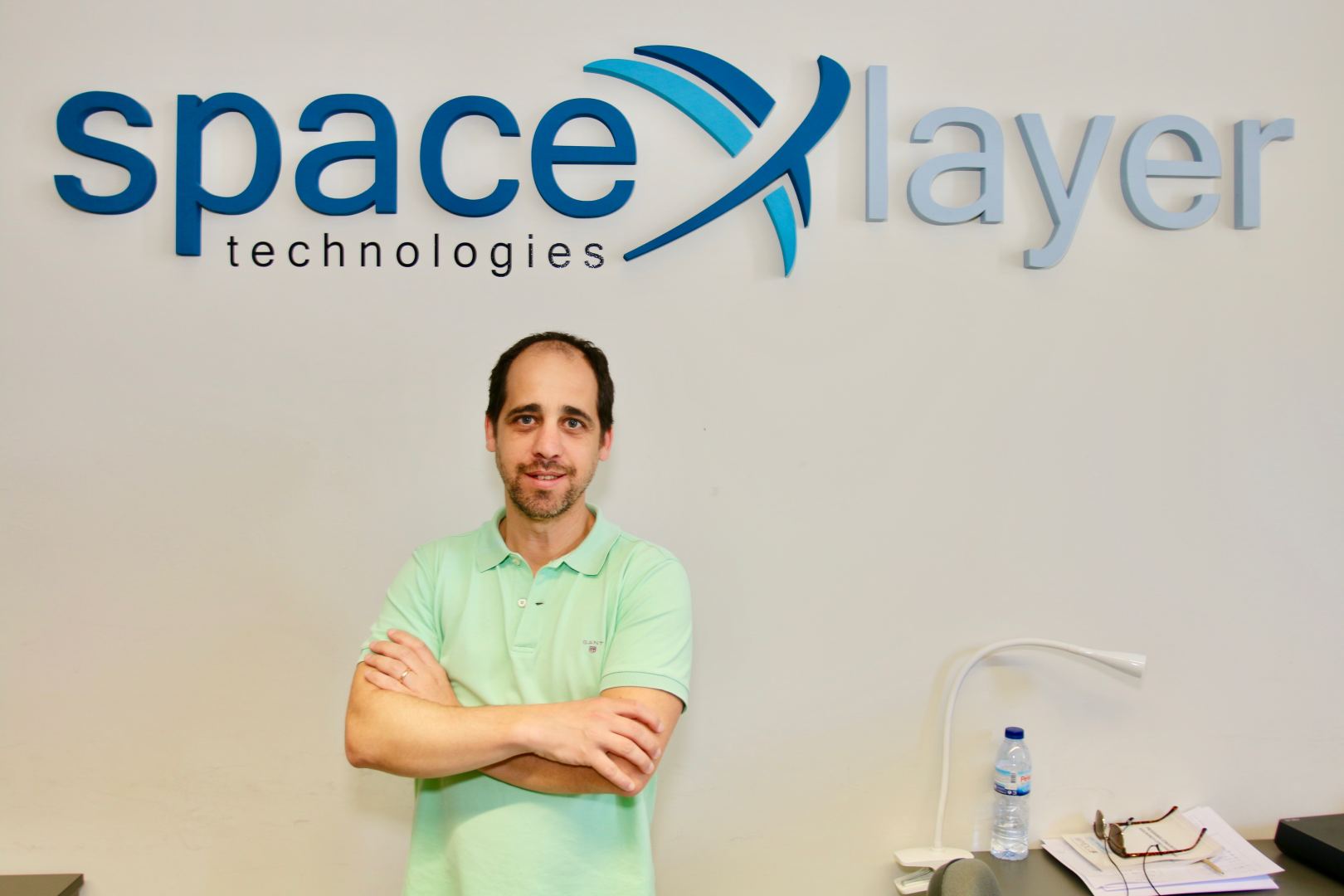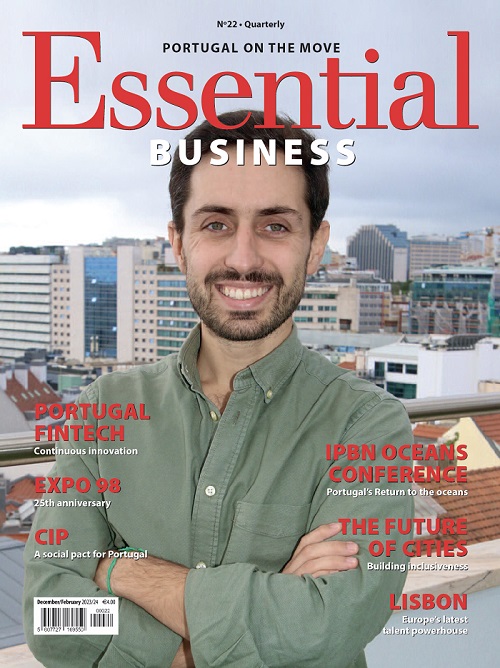Entrepreneurs bringing space to earth
At Coimbra University’s prestigious Instituto Pedro Nunes, groups of entrepreneurs and scientists are bringing space technology back to earth. Satellite and space mission high-tech is finding new business applications in surprising ways.
European Space Agency Space Solutions
You might not imagine that the technology used in protective space helmet visors used by astronauts on the International Space Station is incorporated in skiing goggles or sunglasses. But it is. Or that satellite imaging might soon be helping property developers and local municipal authorities pinpoint when roofs need repairing or window frames need installing in existing projects earmarked for refurbishment. But it will. And you might be surprised to learn that sophisticated meteorological equipment used in space weather satellites could soon be helping asthma and hay-fever sufferers avoid potential hotspots thanks to an app on their smartphones. Believe it!
European Space Agency (ESA) Space Solutions is a one-stop shop for repurposing space technology. “By exploiting space know-how, facilitating and inspiring its use in new applications and sharing this knowledge, we’re bringing space back down to earth for the most diverse applications: from health to transport, sport to entertainment, and many more areas of our daily lives,” says Carlos Cerqueira, Portugal Space Solutions Coordinator and Innovation Director at the Pedro Nunes Institute. At the heart of this project is an agile and specialist transfer and incubation network, connecting and enabling businesses and entrepreneurs in Portugal and across Europe. The Instituto Pedro Nunes is coordinating the first ESA Space Solutions “one-stop shop” and has been able to combine, within the same institution, several ESA programmes to foster downstream technology transfer and business creation through a Business Incubation Centre, Technology Transfer Brokers and a Business Applications Ambassador Platform.
Astropreneurs
Astropreneurs is one such project. Starting in January, the aim of the two-and-a-half-year programme is to help a number of startup entrepreneurs in the traditional economy benefit from advanced space technology. “It’s basically a startup accelerator using space technology and turning space-related ideas into viable businesses while promoting opportunities for entrepreneurs coming from the space and non-space sectors,” says Carlos Cerqueira.
The scientist points out that space technology is breaking barriers. With rocket and satellite development costs falling, a regulatory embracing of private spaceflight and better remote sensing and data capabilities, funding for space technology companies has sky-rocketed from almost nothing in 2012 to $US4 billion (€3.4 billion) in the last two years. “The Astropreneurs programme covers ideas and concepts which can be used by the space technology sector. Equally, technology developed for space can also be redeveloped by an entrepreneur outside the space sector,” says the innovation director.
Portuguese startups using space technology
Portuguese astropreneurs involved in the programme are assigned a manager who then appoints a single mentor or group of mentors to assist the astropreneurs in their research and development. “Space tech includes startups involved in the construction and launch of satellites or rockets as well as ancillary businesses working to aggregate and analyse satellite data,” explains Carlos Cerqueira. “Some technology from space missions can have applications on earth. Much of the technology used in the Apollo missions ended up being used in our daily lives — infrared ear thermometers, anti-icing systems, fire-resistant clothing and equipment, vitamin-enriched baby food and UV sunglasses to name a few,” adds Cerqueira.

A Portuguese partnership with NASA
One well-known example of a Portuguese company — although not a startup — developing its products for spaceflight is industrial cork company Amorim. Amorim is working with NASA because cork is an excellent thermal insulator. When a rocket or spacecraft is launched into space, its structure is subjected to temperatures exceeding 1000ºC. The same occurs on the return to earth, as soon as the spacecraft enters the atmosphere. Just a coating of a cork compound between 1.6cm and 2.5cm thick, depending on the heat load it has to withstand (always over 1000ºC), is needed to protect the spacecraft from the spread of flames. The cork is applied to critical components for the spacecraft’s safety — usually the nose cone and other parts of the propulsion rockets coupled to the spacecraft.
Satellite technology
Carlos Cerqueira points to all the things we can do today that use satellite technology: smart mobile phone applications, GPS location, satellite navigation and online mobile weather forecasts are achieved through satellite technology. “This is very useful when it can be transformed into business applications here on earth. An application that could show air quality, or one that could evaluate the progress of a construction development project from satellite imaging,” says Cerqueira. “When this kind of technology is made available for people with ideas, new applications can be developed and new uses found for advanced technology through startup redevelopment,” says the scientist.
EU 2020 Horizon
The Astropreneurs project is funded by European Community funds within 2020 Horizon, which is the biggest EU Research and Innovation programme ever with nearly €80Bn of funding available over seven years (2014 to 2020) — in addition to the private investment that this money will attract. It promises more breakthroughs, discoveries and world-firsts by taking great ideas from the lab to the market. This particular space technology project involves a consortium comprising Portugal, Spain, the United Kingdom, France, Austria, the Czech Republic, Germany and Belgium.
“It was formed by a group of entities that have been working on space for some time now and are associated with the European Space Agency and a network of incubators. Startups can apply to compete for €50,000 in funding to develop a technology idea adapted for space technology and applying it to terrestrial projects. Space technology can have commercial applications and new commercial ideas can have application in space,” explains Carlos Cerqueira, who points to 18 startups in Portugal which successfully bid for funds and secured them for the next two years.
Space Layer Technologies
One promising startup that is transferring space technology to earth using satellite technology is Space Layer Technologies. A startup company of the Instituto Pedro Nunes, and a spin-off of Primelayer (geographic information systems) and the University of Coimbra, it was founded by two brothers, Paulo and Pedro Caridade. Its goal is to develop an international company devoted to environmental sensing with a strong R&D (research and development) laboratory.
“We’re very focused at the moment on observations of the earth by measuring air quality in terms of pollution,” says CEO Paulo Caridade, who has forged a link with the Copernicus Atmosphere Monitoring Service programme. “This gives us access to data from satellites and enables us to create value from this information through applications. In our case, we share the information with asthma, COPD (chronic obstructive pulmonary disorder) and bronchitis sufferers so they can avoid certain places when pollution levels are high,” he continues.
Space Layer Technologies has access to satellite information from Europe and North Africa, can forecast air quality 72 hours in advance and can accurately predict pollution levels up to six hours in advance with very little margin of error. The startup is fitting street lamps with a plug-in-play system which measures pollution – ozone, Co2, and carbon monoxide. It is also involved with a pilot project in Coimbra monitoring air quality using a sensor fitted under buses.

Buildtoo
Also benefitting from European Community 2020 funding is Buildtoo, an innovative construction project management platform that permits an entire building project to be supervised and optimised in real time, from start to finish, between the site building manager to the final client. The platform could eventually be adapted for use in space for remote monitoring of space station or other space construction projects. “We created this platform in an attempt to allow a client or developer to track whatever is happening in every stage of a development,” says CEO and Senior Partner, Helder Loio.
Buildtoo enables the user, in a fast and agile manner, to monitor everything that is happening on a project by giving access to all construction planning and timetables, budgets, documents, blueprints, reports, planning permission applications, messages, supplies and materials, payment plans, and so on,” adds Helder Loio. “We accompany the entire process from when the client or developer buys the land to the building and final decoration, fitting and even maintenance. It is basically project management transferred to a platform and through this we can communicate with the clients, suppliers and local authorities,” he explains. Buildtoo has over 100 projects on its platform, employs 24 staff and has a traditional company business model. “In January 2016, we became an SME and since then have made profits but we need investors to grow and fee-paying clients who pay to use the Buildtoo platform. Next year, we plan to launch ourselves internationally and be visible at major property fairs like MIPIM, Expo Real and Batimat,” Helder Loio concludes.
Connect Robotics
This startup offers a drone delivery service for medicines distribution from pharmacies and between hospitals, with fully autonomous drones and UTM (urchin tracking module) system capable of delivering drugs, samples from and to hospitals and laboratories three times faster than conventional deliveries. The space connection is by using Galileo GNSS (Global Satellite Navigation System) to augment precision and reliability in navigation and landing.
Active Aerogels
Active Aerogels produces and commercialises aerogels for space and non-space applications for use in pipeline insulation, aeronautics, building and construction, and wastewater treatment. Its space connection is a silica-based aerogel that has been tested in several space stations and can be used in landers, rovers, launchers, cryogenic tanks and entry/re-entry capsules.










